Combat
Air Assaults, 1st Battalion 6th Infantry, US Army Vietnam 1970 and 1071
The following photos provided by Ray Tyndall (3/B/1-6 Inf 1970-71) capture
the essence of a combat
assault via helicopter during tactical operations by the 1st Battalion
6th Infantry in the Batangan in 1970.
Although these photos were not all taken during the same mission, the
effect was the same--anticipation,
uncertainty, fear, sometimes suppressed grief, always fatigue, and
finally relief.
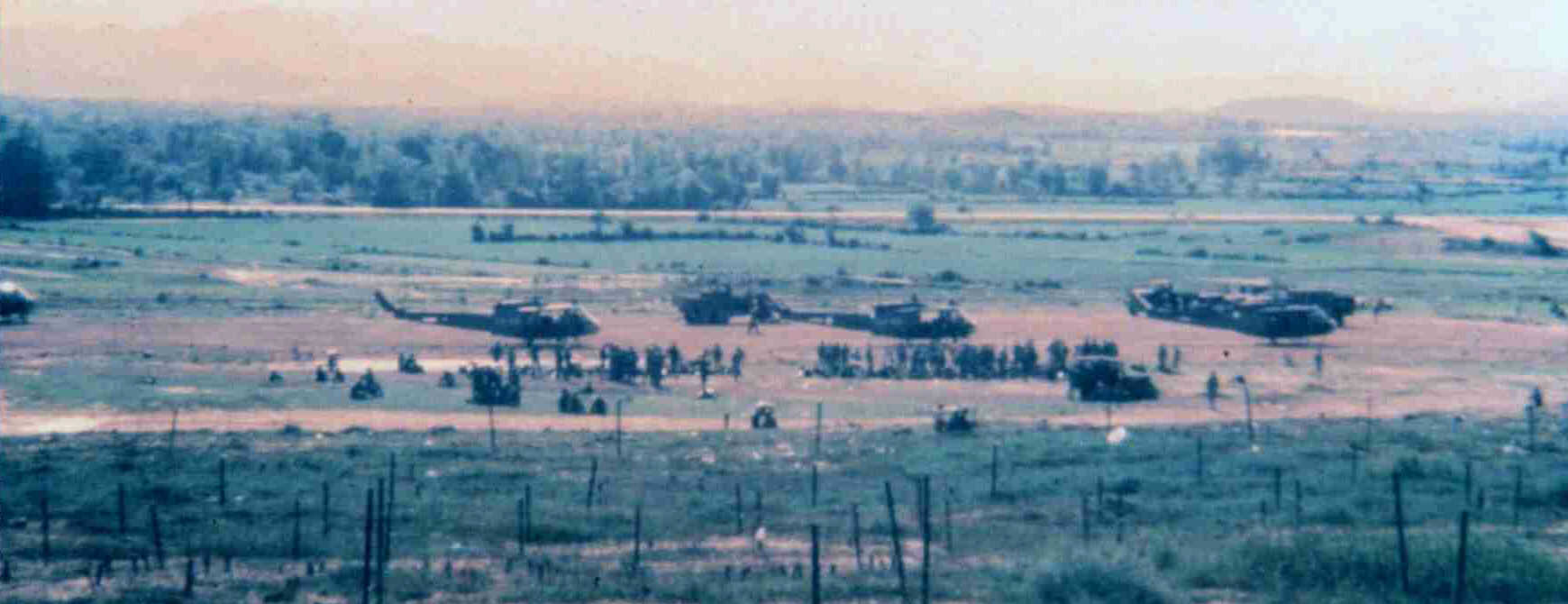
Soldiers on the PZ at LZ Dottie, about ten miles south of Chu Lai,
Vietnam. The choppers have not
cranked, but loading will begin shortly. Highway QL1 crosses
the photo just above the helicopters.
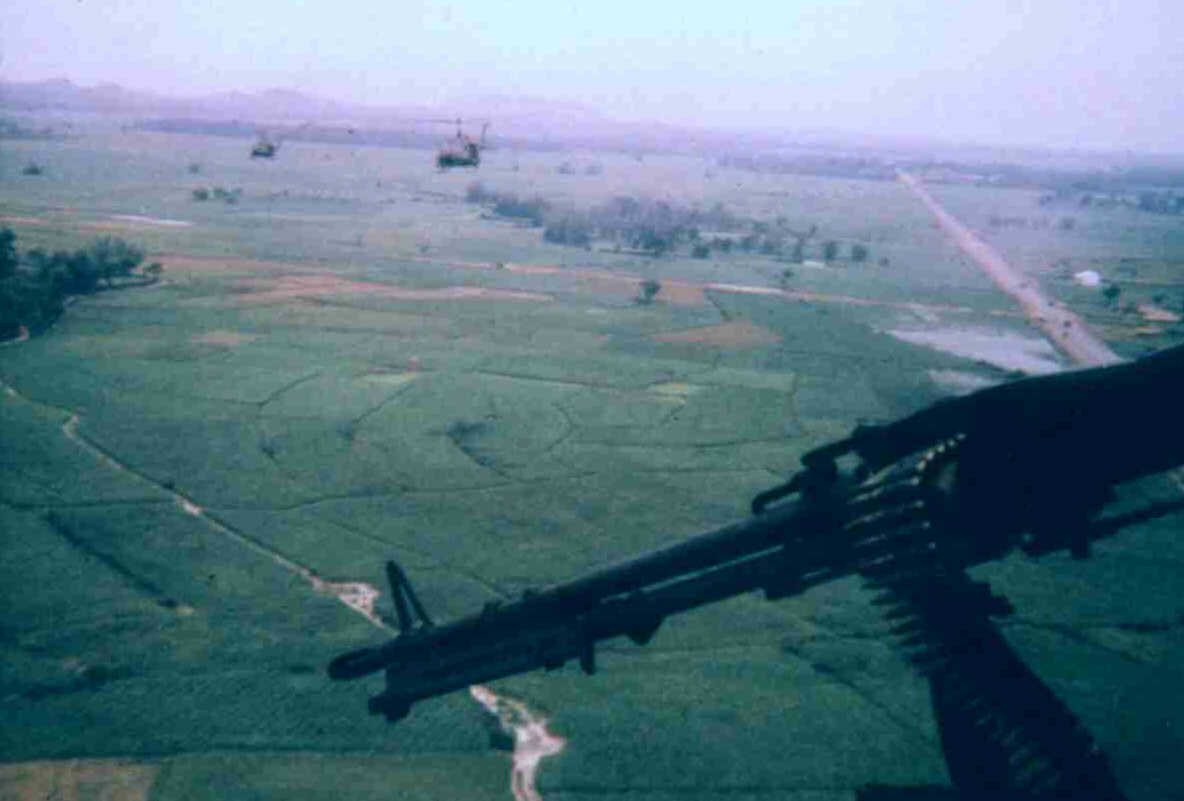
Just after liftoff from LZ Dottie as the choppers head north and start
to join up in flight formation. The
door gunner's M-60 machinegun with linked 7.62mm ammo is at the ready.
Highway QL1 is visible on
the right side of the photo.

Descending toward an LZ in single trail formation. The door gunner
on the right side of the number two
helicopter just in front is ready for any enemy soldiers concealed
in the vegetation below. Land cleared
areas (visible as the red clay below) on the left side presents less
of a threat.

Touchdown on a "cold" LZ by lift helicopters in double trail formation.
Soldiers rapidly assume the
prone firing position as the lift departs. Mercifully, it is a "cold"
LZ with no enemy fire. Now begins
the serious work--the hunt for the VC/NVA.
[Note: in November, 1970, the 1st Bn 6th Inf began utilizing night time
combat air assaults. At
first the pilots were scared - all the ground fire could be seen clearly.
Multiple tracers floating
upward toward you as you sit on the floor of a "slick" lift helicopter
with your feet dangling out the
door is not something you soon forget. We grunts were indifferent
to the 1/2 rotor disk separation on
short final approach into the night LZ. If the LZ was "cold",
the greatest contrast between a day and
a night LZ was the sudden quiet and momentary black darkness as the
parachute flares used to
provide illuminatin for the opertion slowly faded. Remember,
this was before the era of widespread
use of night vision devices. After insertion, the soldiers patolled
only at night, set multiple ambushes,
and then with the daylight, tried to get some sleep in carefully chosen
and concealed defensive positions.
While the enemy could easily pinpoint a daylight air assault, and then
keep track of the movements
of our soldiers, at night the advantage passed to us--they knew about
where we inserted, but generally
had no idea where we moved to in the darkness.]

Mission complete. As smoke marks the PZ, soldiers gather in clusters
of five or six to load up and fly
out. Note the ground guide for each aircraft.
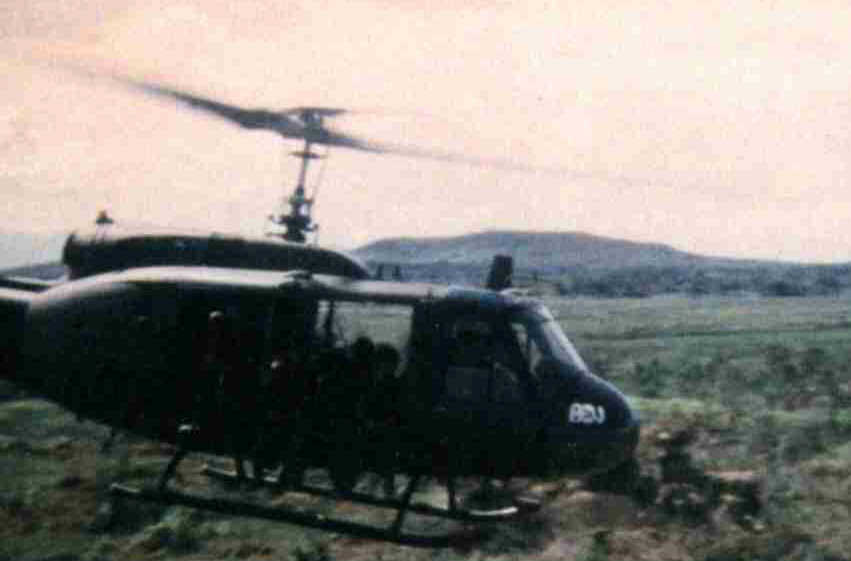
"Lets get the hell out of here" Having survived another mission,
soldiers from B Co, 1st Bn 6th Inf sit
in the door of the helicopter with their feet dangling free as they
lift off from a PZ in the vicinity of Tam
Hoi 3 (BS 662 878). The imposing bulk of the Monastery hill mass
rises in the background.
For more exceptional photos like these, be sure to visit Ray
Tyndall's web site.
On 11 April 1971, the 1st Bn 6th Inf tactical area of operations expanded
westward to Tra Bong,
and northward to include both sides of the mountain ridge just west
of Chu Lai. In that environment,
the air assault operation changed little--while some LZs were in valleys,
others were on ridges..
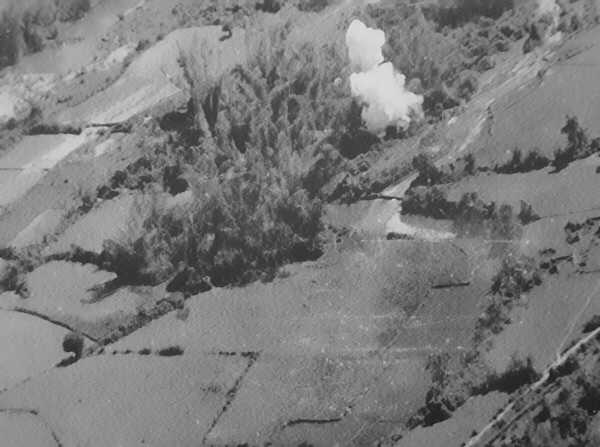
This photo shows white phosphorous (WP) rockets impacting in a tree
line adjacent to an LZ. This
view was a familiar one to those in the UH-1 Command and Control (C&C)
helicopter who had just
made a low and fast pass across the proposed LZ, with the helicopter
doorgunners blasting the tree
line while the operational commander popped smoke on the LZ to mark
where the lead helicopter was
to touch down. After the run, the C&C helicopter climbed
rapidly and doubled back to orbit over
the LZ. Depending upon the amount of LZ prep by the gunships,
the lift ships could be only moments
behind.
The orbiting C&C helicopter was in position to coordinate artillery
fires adjacent to the LZ as the
troops were being inserted, to adjust the route to the LZ flown by
lift ships to avoid suspected enemy
positions but to continue to support the insertion efficiently, to
request Close Air Support from the
USAF, or to provide an emergency medivac dustoff if the need arose.
Close coordination was
required between the operational commander and the artilllry liaison
officer in the C&C aircraft, the
lift commander for the "slicks," the gunships supporting the operation,
and the commander of the ground
unit being inserted. This meant that the operational commander
had to monitor at least three radio
channels and the aircraft intercom.
Sometimes the 1st Bn 6th Inf Commander left control of the initial air
assault to the Bn S-3 (Opertions
Officer or Asst S-3) so that he could focus on supporting the developing
ground battle without being
distracted by the organized chaos of the initial insertion of troops.
In addition, the heavily loaded
C&C aircraft usually had to break to refuel shortly after the insertion
was completed. By timing his
arrival over the on-going insertion and by operating from a separate
OH-6 Light Observation
Helicopter (LOH), the commander was in a position to remain on station
for a longer period of time
to assist with the developing ground situation.
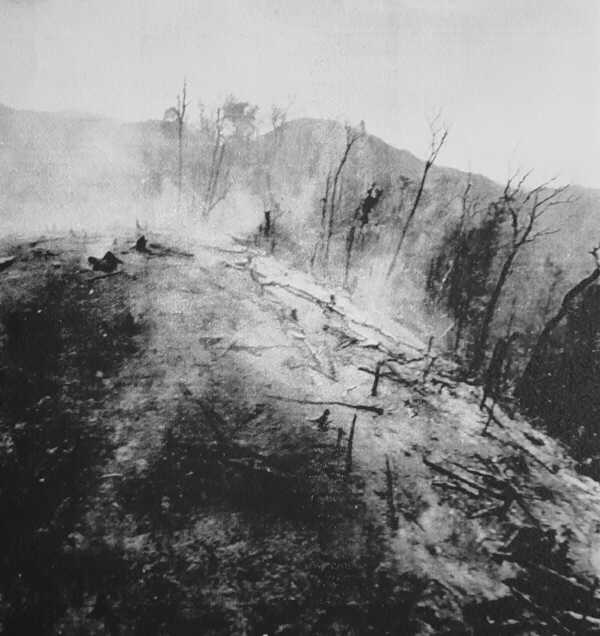
Sometimes there were not adequate clearings for LZs on the mountain
ridgelines that were thought
to conceal NVA and VC. In such a case, air strikes and
artillery bombardments sometimes were
used to blast away the vegetation for an LZ and to prepare for a combat
assault. This photo reminds
the web master of just one such ridgeline LZ in May, 1971, in the mountains
west of Chu Lai, where
only one "slick" helicopter could land at a time. B&W photos
from the National Arichives II.
Select additional photos from the index at left or link to the 1st Bn
6th Inf Home Page